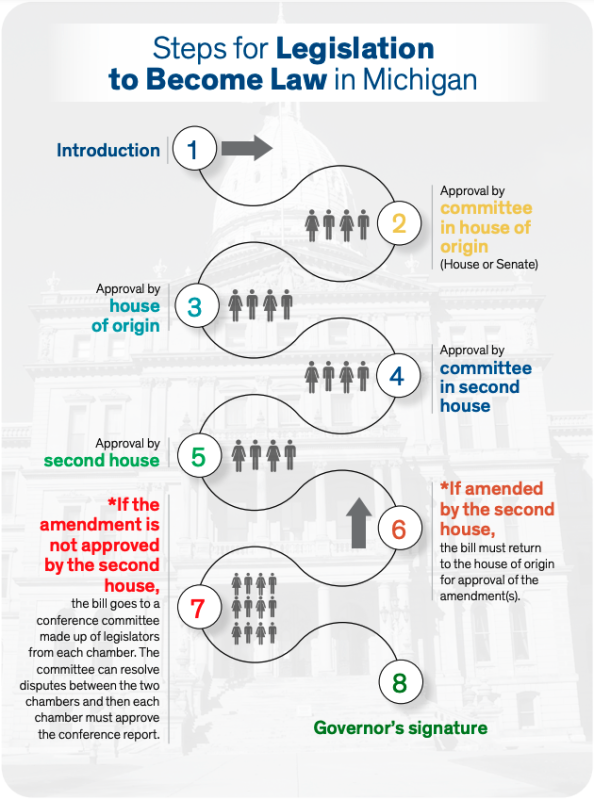
How do we develop new legislation? Let’s describe the process – and the important role MRA members play.
STEP 1: IDENTIFYING CHALLENGES
The process to change or make a new law really starts with you. It all begins by identifying a challenge or regulatory hurdle that needs to be addressed or an opportunity that cannot be realized until a law is changed. Share what is happening in your business with us and any items that don’t make sense or prevent you from moving forward efficiently.
I can’t stress enough that we WANT to hear those things! If I could come and spend a day working in each and every one of your stores and businesses I would. That kind of hands-on experience and information helps me better understand how current laws and regulations really work (or don’t work) in the real world. It gives us direction and the background to answer more of the possible questions legislators may pose.
STEP 2: DRAFTING DECISIONS
Once we know what we need to fix, we have to figure out the best way to do it. This is where the details
really matter. We take our time carefully identifying which section of statute to open, which subsection to work within, or whether to create a new act. Working within an existing statute can be limiting but is necessary when making changes to existing laws.
Then there are the definitions to consider. Michigan law contains a vast array of terms, some defined, some not defined, some defined differently depending on the section of statute you’re working within. You might be surprised how much a single word can influence a law. Words like “and” vs. “or” and “shall” vs. “may” make a huge difference in how regulators and the courts interpret meaning.
That said, we’re not entirely on our own. Other states have often tackled some of the items and changes we’re seeking. It’s important to review other state laws and legislation to see which pieces we can use here in Michigan. Legislators and multi-state businesses also appreciate when we consider other states’ actions and include the best possible pieces.
STEP 3: BUILDING SUPPORT
Once the language to make the change we need is drafted, it’s time to build support for the change. We need to identify a favorable bill sponsor or sponsors and bring those legislators up to speed on the changes we’re seeking. It’s important to find someone who will champion this change through the legislature. Given the sheer number of steps in the legislative process, it’s critical to find someone who will help you push the rock up the hill. The more people enthusiastically pushing, the easier and faster you’ll reach the top.
We also need to think through which legislative committee and chamber will be most favorable to start the bill in. While we can’t always get a bill directed where we hope it will go, it’s important to think through where there is more support or which committee may have room on its agenda. Political realities in an election year require us to make additional considerations: implications of legislators running against each other in primaries, political party dynamics and timing. Maybe legislators will want to take this up after an election if a vote could end up on a political mailer.
We also need to gauge support from other impacted industries. Before introducing a bill, we want to know who are our supporters, who will be neutral, and who will oppose our suggested changes. Once we know who falls into each of those categories, we can see if it’s possible to make changes to our draft legislation to move groups from opposition to support.
STEP 4: INTRODUCTION
After identifying the problem, drafting the language to make the change, and building support, we’re ready to introduce a bill. The legislative process has lots of checks and balances in place in an attempt to ensure only good policy is made. So the bill’s introduction is when the real fun starts.
